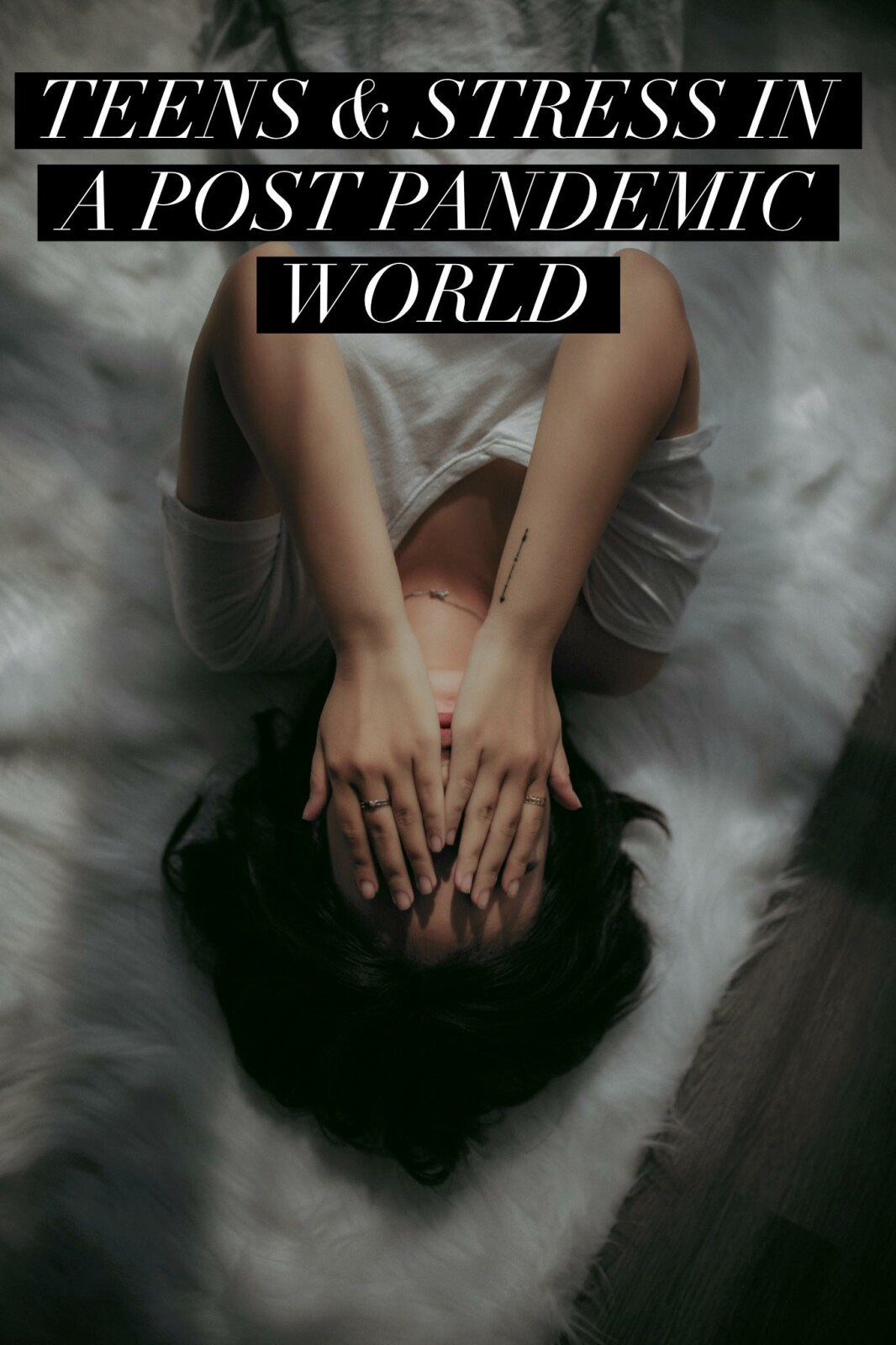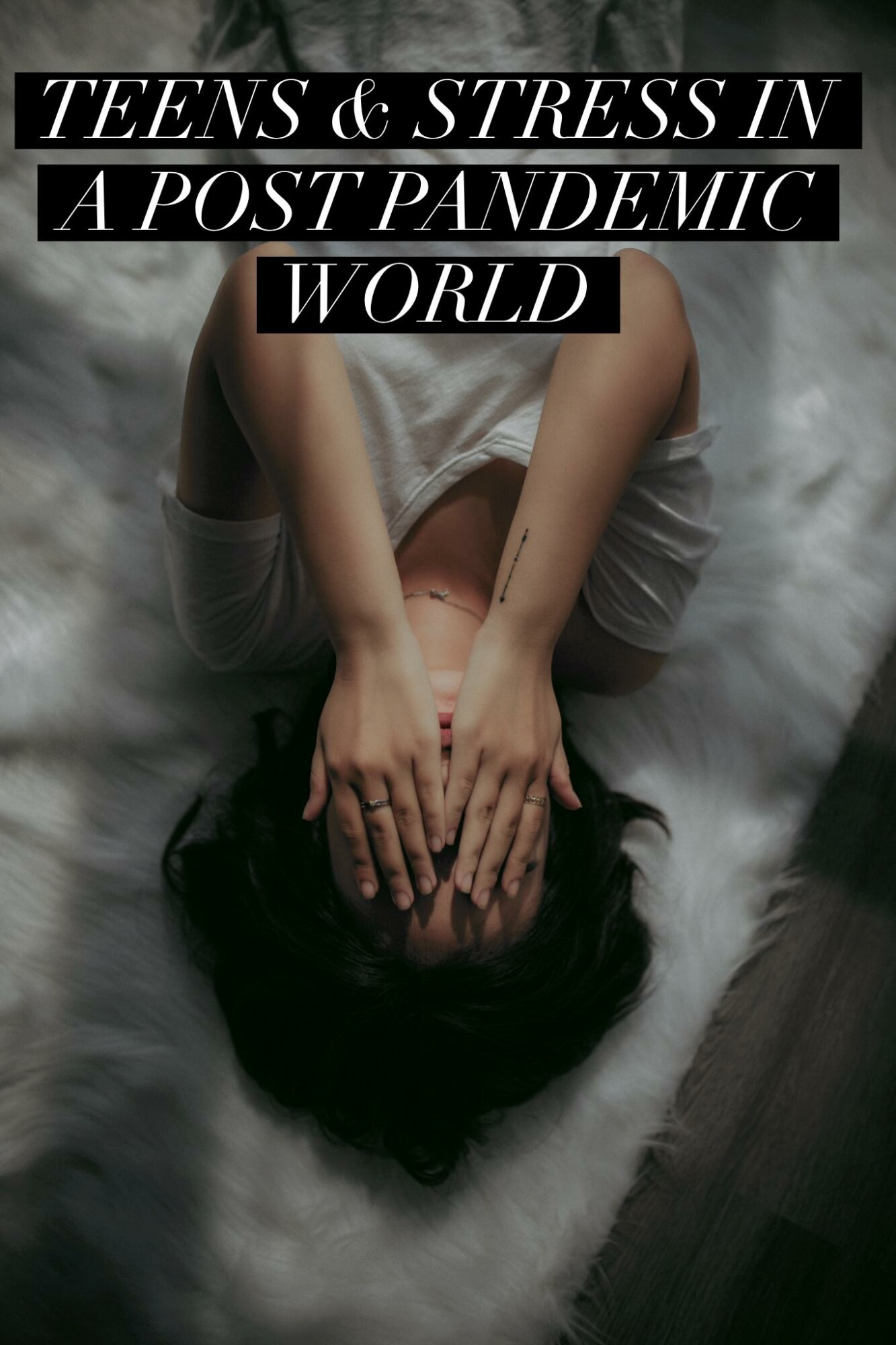
One thing people might not know is that while I'm a homesteader and that's what I plan on talking about A LOT of this blog, I'm a chiropractor by day. I take pride in helping people relieve their stress, find holistic solutions to their headaches or hormone issues and learn to thrive in their health and overall lives. I'm a researcher and "digger" by nature, and love digging into the current research and articles out there. I'm sure that throughout the pages of this blog I will have quite a few "sprinklings" of remedies, lifestyle choices, and health information that hopefully will benefit you just as much as articles on where you are going to plant a garden or what kind of chickens to get.

When the schools were shut down for CoVid, we were told "the kids are resilient. They'll be ok". I'm here to tell you they most definitely are NOT! I'm seeing a large amount of kids struggling right now, and I don’t have all that many teenage patients. The surprising thing is that it's not just the middle school girls like we are used to seeing. It's high school BOYS! I talked to a student yesterday who is quitting basketball this year. He loves basketball and when I asked him about the upcoming season, he told me wasn't playing this year. You could tell he didn't want to talk about it, but that he was struggling. During football season, 4 boys on the JV team quit....on the same day, 3 because of mental health related issues.
Boys are much more closed off so unless they are used to expressing emotions, they probably aren't talking about it. They look ok on the outside-smiling, joking around, having fun, being their normal selves. You as a parent may not ever see the turmoil because they aren't SHOWING you. They are fighting an internal battle, possibly taking it out on people at school or in their peer group, who take their behavior as them “joking” around. They sense they are acting different but they can’t pinpoint exactly why.
In the spring of 2020 a survey found close to a third of students felt unhappy and depressed much more than usual. In the past year, as we have returned to “normal life", the latest research shows that many students are still living in a state of mental health crisis. 44% of students stated that during the past year they felt hopeless or perpetually sad. 44%!!!! That is a HUGE number!!
Some of the reasoning’s could include having been closed off from their peers, the stress of going virtual and having to learn a whole new way of learning that they’ve never had to do before, the inability to see smiles or receive hugs and touch from people. Smiles, hugs and touch all release oxytocin as well as serotonin and dopamine. A lack of touch and interaction decreases these "feel good" hormones and increases stress hormones such as cortisol. Add in the various stressors during the past couple of years of loss of loved ones, online schooling, loss of family income, loss of sporting events, etc and this increased the cortisol even further. Research tells us that long term, elevated cortisol in kids and teens leads to an increase in anxiety. Early childhood and teen year experiences are fundamental in shaping both the development of the stress response and the responses from an individual to stress across their life. It should come as no surprise then, that the experiences of the last year have changed the way that these young minds respond to stress or any kind.
“A study by Hankin and colleagues (2010) found in a longitudinal study from preschool through adolescence that high-risk, dysphoric children showed hyporeactivity to a stressor in preschool and 3rd grade, but hyperreactivity to a stressor in 9th grade, illustrating a developmental shift in cortisol response for at-risk youth. In addition to activation during the stressor itself, a failure to downregulate HPA activity following stress termination has been identified as a marker of internalizing problems in adults”. (Taken from “Child Anxiety Symptoms Related to Longitudinal Cortisol Trajectories and Acute Stress Responses: Evidence of Developmental Stress Sensitization”. https://www.ncbi.nlm.nih.gov/pmc/articles/PMC4351756/)
I would argue that with the traumas and micro traumas that have occurred over the past 2 years, it’s not a matter of “at risk” or “dysphoric”. I would argue that right now, ALL our youth fall in the “at risk” category.
I would argue that with the traumas and micro traumas that have occurred over the past 2 years, it’s not a matter of “at risk” or “dysphoric”. I would argue that right now, ALL our youth fall in the “at risk” category.
So what does this mean when we say “hyporeactive” in younger kids and “hyperreactive” in teens? You may notice that in your younger child, they tend to shut down more in a stressful situation. They may withdraw into their computer game or TV show. They may not notice other people talking and talk over them. They may forget where they put things or look at something but still not be able to “find” it. A teen with hyperreactivity to stressors may exhibit what appear to be outbursts at seemingly nothing. They may react inappropriately to people joking with them or touching them, have a difficult time “letting things go”. They may not be able to focus in a class where there is a lot of noise or other stimulation. They may be defensive or combative to situations that normally they could tolerate. They may have avoidance issues, meaning they can’t stay in a classroom long and have to leave, or leave any situation that is causing them an uneasiness. They may avoid physical touch, despite having loved it before and may be easily angered or upset. Sound at all like things your kids are going through? YOU AREN’T ALONE! We are seeing this more and more in the students in our schools, at least in our local school where after the pandemic and all its traumas, we had another large tragedy in our district followed by a situation that left a “black eye” on our schools. Our students are feeling this and they are struggling because of it all!
The National Association of School Psychologists (NASP) recommends a ratio of 1 school psychologist per 500 students; but current NASP data estimates that in larger districts the ratio is 1 per 1,211 students. I say that with all that is going on, this 1:500 is NOT enough. I’ve heard from students that it’s often difficult to get in to the therapist or guidance counselors in their schools because there are so many other students needing the support as well. When we are in a crisis situation, as I would argue that our schools are in, we must treat it like the emergency situation we are in.
The National Association of School Psychologists (NASP) recommends a ratio of 1 school psychologist per 500 students; but current NASP data estimates that in larger districts the ratio is 1 per 1,211 students. I say that with all that is going on, this 1:500 is NOT enough. I’ve heard from students that it’s often difficult to get in to the therapist or guidance counselors in their schools because there are so many other students needing the support as well. When we are in a crisis situation, as I would argue that our schools are in, we must treat it like the emergency situation we are in.
So with the lack of mental health care available, what are our options for potentially helping out teenagers deal with these challenges and decreasing their cortisol levels?

